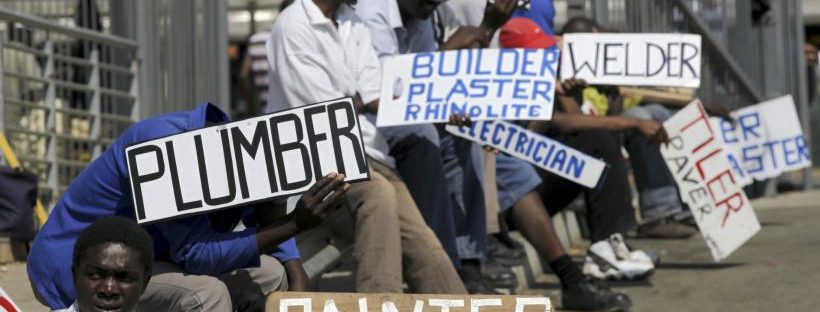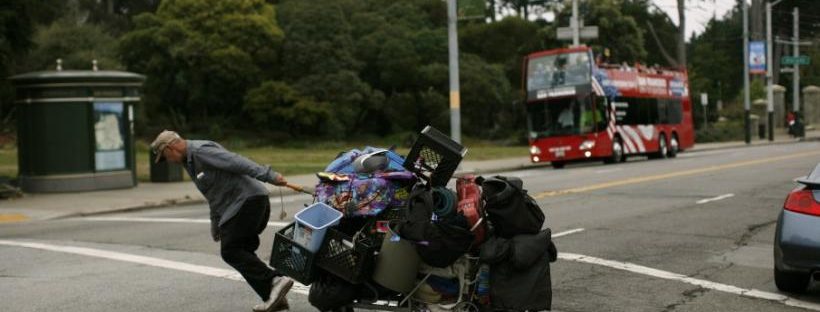[According to Forbes], short-term unemployment—six months or less—was 4.9% [in January 2013], [...] only 0.7% above the pre-recession rate. Long-term unemployment [...] is at 3%, which is three times higher than before the recession. The long-term unemployed make up 38% of all workers without jobs. This troubling [statistic] not only [affects] the societal safety net … Continue reading What Happens When Unemployment Runs Dry?
Nominate a Small Business to Win in DollarDays’ $5,000 Giveaway
“If you know anything about DollarDays, the nation's premier online wholesaler, then you know we are committed to the success of small businesses everywhere,” said DollarDays' CEO, Marc Joseph. “This commitment is evident in a myriad of ways—from wholesale and closeout pricing on over 225,000 products to several online business opportunities to a monthly $5,000 merchandise giveaway. … Continue reading Nominate a Small Business to Win in DollarDays’ $5,000 Giveaway
Is Entrepreneurship Dead in America?
Over 200 years ago, James Madison wrote, “[T]he greater proportion of citizens who are their own masters, the more free, the more independent, and the more happy must be society itself.” Entrepreneurship is a critical measurement of our country’s political vitality and our own personal liberties. The more independent citizens become, power and responsibility will … Continue reading Is Entrepreneurship Dead in America?
DollarDays Offers Online Business for $9.95 per Month, Helping Americans Make Money, Receive Peace of Mind
With the uncertainty of the fiscal cliff, DollarDays took a proactive approach and created an exciting business opportunity to help nervous Americans earn extra income in 2013 to offset the hardship of a potential tax increase. DollarDays' CEO, Marc Joseph, announced today, “In these tough economic times, DollarDays is moving forward with the opportunity for business-minded individuals to … Continue reading DollarDays Offers Online Business for $9.95 per Month, Helping Americans Make Money, Receive Peace of Mind
Everyone Needs a Bed
Homelessness, poverty, recession—you would hope that a new year would wipe away all of the bad things that have happened to our nation, but it does not. We still wake up in 2013 with the same issues we had in 2012. Is there any hope in sight? According to the U.S. Census, the official poverty … Continue reading Everyone Needs a Bed
The Poor, the Elderly, the Disabled Stand to Lose the Most
More Americans used food stamps to buy their Thanksgiving dinner than any time in our history according to U.S. News & World Report. Forty-two million of us are on food stamps, and the food-stamp program (now called the Supplemental Nutrition Assistance Program, or "SNAP") cost the U.S. government $72 billion last year. This means one … Continue reading The Poor, the Elderly, the Disabled Stand to Lose the Most
9 Tips to Get Last-minute Holiday Shoppers into Your Store
Thanksgiving is over, [and] Black Friday is in full swing. Is it too late for your small business to capture holiday sales? No way. A recent study by PriceGrabber shows more than half of consumers expect the best holiday deals between Thanksgiving and Christmas. With the National Retail Federation predicting holiday sales to grow 4.1% … Continue reading 9 Tips to Get Last-minute Holiday Shoppers into Your Store
Disaster Creates Huge Demand for Survival Supplies for DollarDays
"We had orders for survival supplies even before [Hurricane] Sandy hit the East Coast as people prepared for the worst, and they are still pouring in. The demand for our wholesale Marc Gold fleece blankets is incredible—we continue to ship thousands. "In addition to stay-warm supplies such as jackets, hats and gloves, [items like] flashlights, … Continue reading Disaster Creates Huge Demand for Survival Supplies for DollarDays
Holes in the Safety Net
America’s national safety net of social services is a curious public/private mix supporting the most vulnerable people in our society. It has been clearly pointed out to us this fall that in our current economic crisis, the government will have to be doing less, because the dollars are not there. According to the [National] Council … Continue reading Holes in the Safety Net
“Obama’s the One,” Say Small-business Owners, Customers of DollarDays
"Our customers are small-business owners trying to stay afloat as the economy continues to recover. Given they're a strong representation of hardworking middle-class Americans, we created an online presidential poll to see who they will vote for on Election Tuesday. "As of this morning, 55% of the poll participants are hoping to see Obama in … Continue reading “Obama’s the One,” Say Small-business Owners, Customers of DollarDays

